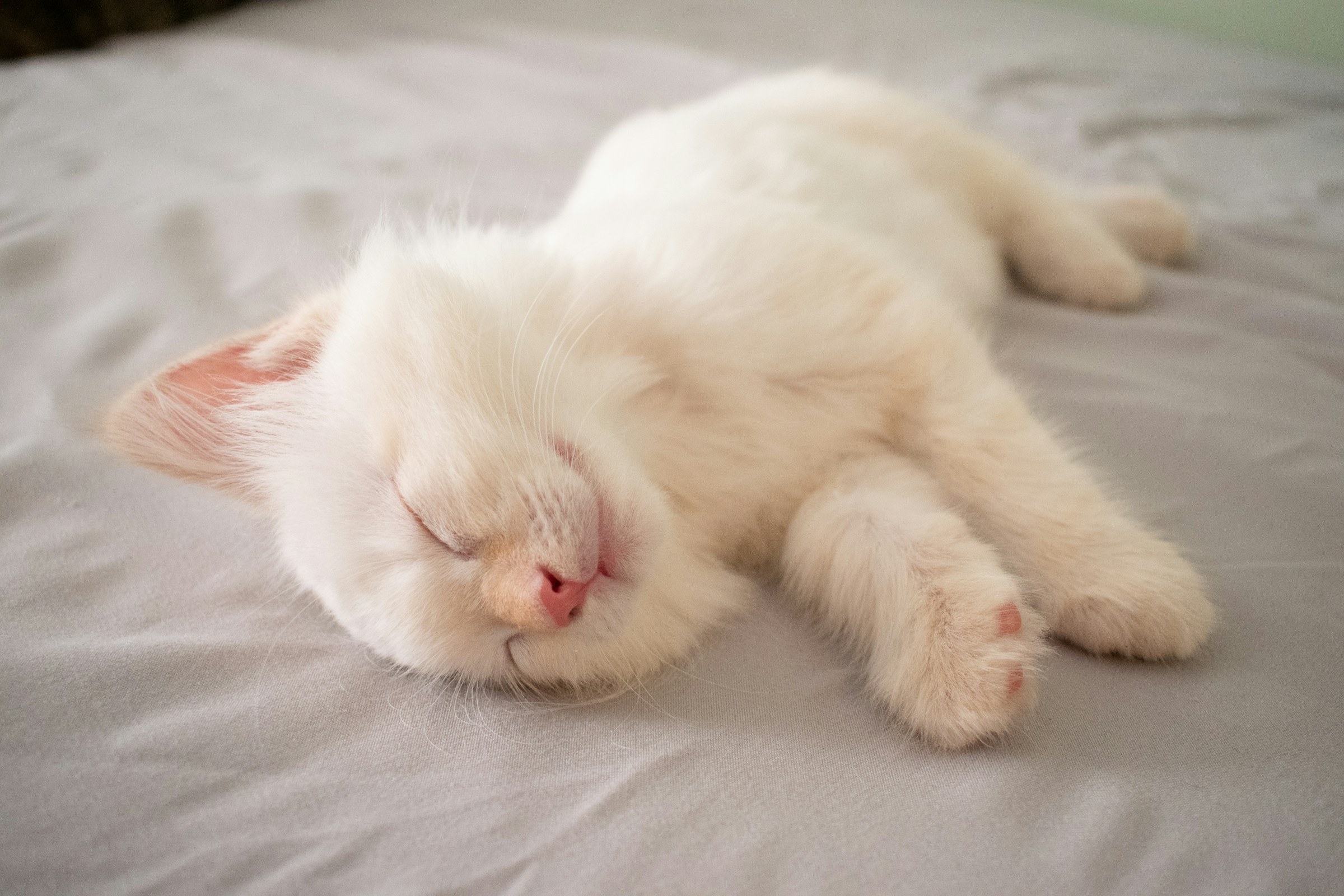Feline urination issues can be distressing for both cats and their owners. Understanding the reasons why your cat may urinate outside the litter box is essential for addressing the problem effectively. From medical conditions to behavioral concerns, identifying the root cause can lead to practical solutions. Explore common triggers and learn how to create a harmonious environment for your feline friend, ensuring their well-being and restoring peace in your home.
Understanding Feline Urination Issues
Feline urination problems can be perplexing and frustrating for cat owners. Inappropriate elimination, such as urinating outside the litter box, is a common issue that requires immediate attention. When a cat exhibits unusual urination behavior, it is crucial to understand the underlying causes. Cats are generally clean animals, and their urination habits can provide insights into their health and well-being.
A découvrir également : Welcoming a New Baby? Essential Tips for Easing Your Cat into the Family Transition
Addressing urination issues promptly is essential. Delayed intervention might lead to more serious health problems or behavioural issues. If a cat suddenly changes its urination habits, it could be a sign of stress, a urinary tract infection, or other medical conditions. Therefore, consulting a veterinarian is advised to rule out any health concerns.
There are several misconceptions about feline urination. Some owners might think that a cat urinating outside the litter box is merely being spiteful. However, this behavior often indicates a problem that needs addressing, such as litter box aversion or anxiety. Understanding cat behavior helps identify the root cause of inappropriate elimination and aids in finding an effective solution.
A lire aussi : Essential Tips for Caring for Your Cat”s Whiskers: Enhancing Their Sensory Health
In summary, recognizing and addressing feline urination problems is vital for maintaining a healthy and happy environment for both the cat and its owner.
Common Causes of Inappropriate Elimination
Understanding the causes of cat urination issues is essential for addressing the problem effectively. Various factors can lead to inappropriate elimination, and identifying these is the first step in resolving the issue.
Medical Conditions
Medical conditions are a significant factor in feline urination problems. Urinary tract infections and bladder crystals are common feline health problems that can cause discomfort and lead to urinating outside the litter box. Cats experiencing pain or difficulty during urination may associate the litter box with discomfort, prompting them to seek alternative places.
Behavioral Issues
Behavioral issues, such as stress or territorial marking, can also contribute to inappropriate elimination. Stress can stem from changes in the household, such as new pets or family members. Cats may also mark their territory when they feel threatened or insecure, leading to urination in undesired areas.
Environmental Factors
Environmental factors, including litter box problems and changes in routine, play a crucial role. A dirty or inaccessible litter box can deter cats from using it. Similarly, changes in routine, like moving the litter box to a different location, can confuse cats and disrupt their habits. Ensuring a clean, easily accessible litter box and maintaining a consistent routine can help mitigate these issues.
Medical Solutions for Feline Urination Problems
Addressing feline urination problems often requires veterinary treatment to ensure the cat’s health and well-being. Initial diagnostic procedures are crucial in identifying underlying issues. These may include urine analysis, blood tests, or imaging techniques to detect infections, crystals, or other abnormalities affecting the urinary tract.
Once a diagnosis is made, medical interventions can be tailored to the specific condition. Common treatments for urinary conditions might involve antibiotics for infections, dietary changes to dissolve bladder crystals, or medications to reduce inflammation and pain. These interventions aim to alleviate discomfort and prevent recurrence, ensuring a swift return to normal urination habits.
Regular veterinary check-ups play a vital role in maintaining feline health care. These visits help monitor the effectiveness of treatments and catch potential issues early. Proactive health care, including routine examinations and vaccinations, supports a cat’s overall well-being and reduces the risk of future urination problems. By prioritising veterinary care, cat owners can ensure their pets lead healthy, comfortable lives.
Behavioral Solutions for Inappropriate Urination
Addressing inappropriate urination through cat behavior modification can be highly effective. Understanding the nuances of feline behavior is crucial for implementing successful training techniques. These methods focus on altering the cat’s environment and habits to encourage proper litter box use.
One key approach is the use of positive reinforcement. Rewarding your cat for using the litter box correctly can reinforce desirable behavior. This might include treats, praise, or playtime immediately after the cat uses the litter box. Consistency is vital, as it helps the cat associate the litter box with positive outcomes.
Behavioral therapy can also be beneficial, especially in cases involving anxiety or stress. Identifying triggers, such as new household members or changes in routine, allows owners to address the root cause. Creating a calm and stable environment can significantly reduce stress-related urination issues.
Case studies highlight the success of these interventions. For instance, a cat with a history of urinating outside the litter box improved dramatically after its owner implemented a structured routine and positive reinforcement. These examples underscore the importance of understanding and addressing the behavioral aspects of urination problems, ensuring a harmonious living environment for both the cat and its owner.
Tips for Cat Owners
Navigating the world of feline care can be daunting, but with the right cat owner advice, you can ensure a harmonious household. A primary focus should be on maintaining litter boxes. Regular cleaning is essential—scoop daily and change litter weekly to prevent aversion. The location is also crucial; place boxes in quiet, accessible areas to encourage use.
Creating a stress-free environment for cats involves understanding their needs and preferences. Cats thrive in stable environments, so maintain consistent routines and avoid sudden changes. Provide plenty of hiding spots and vertical spaces to help them feel secure. Recognizing signs of stress or discomfort, such as excessive grooming or changes in appetite, is vital. These can indicate underlying issues that need addressing.
Managing stress effectively can prevent behavioral problems. If you notice signs of anxiety, consider introducing calming aids like pheromone diffusers or interactive toys to engage and soothe your cat. Remember, each cat is unique, so tailor your approach to their specific needs.
By following these guidelines, you can create a comfortable, stress-free environment that promotes your cat’s well-being and encourages proper litter box habits.
Preventive Measures
Ensuring feline wellness involves a proactive approach to care. Regular health check-ups and screenings are vital in preventing feline urination issues. These visits allow veterinarians to detect potential problems early, ensuring timely intervention and maintaining your cat’s overall health.
Establishing a stable environment is crucial for preventing stress-related urination problems. Cats thrive in consistent surroundings, so maintaining a routine helps minimise anxiety. Provide familiar spaces and avoid sudden changes in their environment to keep your cat feeling secure.
Proper nutrition and hydration are essential components of proactive care. A balanced diet supports urinary health and prevents issues like bladder crystals. Ensure your cat has access to fresh water at all times, as adequate hydration is key to preventing urinary tract problems.
By focusing on these preventive measures, cat owners can significantly reduce the risk of urination issues. Proactive care not only addresses potential health concerns but also fosters a harmonious living environment for both the cat and its owner. Prioritising these aspects of feline wellness ensures your pet remains healthy and content.
Troubleshooting Specific Scenarios
When faced with urination problems in specific cases, it’s important to conduct a thorough situational analysis and cat behavior assessment. Each scenario requires a tailored approach to effectively address the issue.
Addressing Changes in Behavior After Moving
Moving can be stressful for cats, leading to changes in urination habits. Cats may feel insecure in new environments, resulting in inappropriate elimination. To ease this transition, create a familiar space by using items with the cat’s scent, such as blankets or toys. Gradually introduce the cat to different areas of the home, ensuring they have a quiet, secure spot to retreat to.
Solutions for Multi-Pet Households
In multi-pet households, urination issues can arise from territorial disputes or stress. Ensure each cat has its own litter box, plus one extra, to prevent competition. Monitor interactions between pets and provide separate feeding areas to reduce tension. Consider using pheromone diffusers to promote a calm atmosphere.
Understanding Age-Related Urination Issues
Older cats may experience age-related urination problems due to health conditions like arthritis or kidney disease. Regular veterinary check-ups are crucial to detect and manage these issues. Ensure litter boxes are easily accessible and have low sides to accommodate any mobility challenges.
Expert Insights and Research
Recent studies on feline urination issues highlight the importance of understanding feline behavior. Research indicates that urination problems often stem from medical or environmental factors. Veterinary insights emphasize the need for comprehensive diagnostics, including urine analysis and imaging, to identify underlying health conditions. Such thorough evaluations can reveal issues like urinary tract infections or bladder crystals, which are common culprits.
Experts recommend a multi-faceted approach to address these problems effectively. Veterinary insights suggest combining medical interventions with behavioral modifications for optimal results. This includes ensuring a clean and accessible litter box environment, alongside addressing any stressors in the cat’s surroundings.
For those seeking deeper understanding, numerous resources are available. Publications such as the Journal of Feline Medicine and Surgery provide in-depth coverage of the latest research. Additionally, consulting with specialists in feline behavior can offer tailored advice and interventions. By leveraging expert recommendations and staying informed through reputable sources, cat owners can better manage and prevent urination issues, ensuring their pets’ health and happiness.
Resources for Further Assistance
Navigating feline urination issues can be challenging, but numerous feline health resources are available to support cat owners. Access to specialised veterinary care is essential. Many clinics focus specifically on feline health, offering targeted services for diagnosing and treating urination problems. Consulting a veterinarian with expertise in feline medicine can provide valuable insights and tailored treatment plans.
In addition to professional care, support networks play a crucial role. Online forums and support groups for cat owners offer a platform to share experiences and advice. These communities provide emotional support and practical tips, helping owners feel less isolated in managing their cats’ health issues.
For those seeking in-depth knowledge, several recommended books and articles on feline behavior and health are available. Publications such as “The Cat Owner’s Home Veterinary Handbook” and “Think Like a Cat” offer comprehensive guides to understanding and addressing feline health problems. Engaging with these resources can empower cat owners to make informed decisions about their pets’ well-being, fostering a proactive approach to feline health care.
















